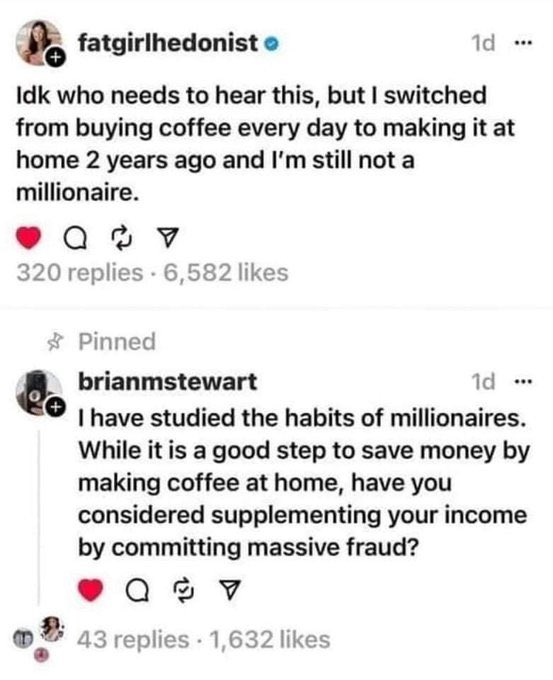this post was submitted on 26 Oct 2024
1617 points (99.2% liked)
Microblog Memes
5714 readers
3474 users here now
A place to share screenshots of Microblog posts, whether from Mastodon, tumblr, ~~Twitter~~ X, KBin, Threads or elsewhere.
Created as an evolution of White People Twitter and other tweet-capture subreddits.
Rules:
- Please put at least one word relevant to the post in the post title.
- Be nice.
- No advertising, brand promotion or guerilla marketing.
- Posters are encouraged to link to the toot or tweet etc in the description of posts.
Related communities:
founded 1 year ago
MODERATORS
you are viewing a single comment's thread
view the rest of the comments
view the rest of the comments

Yeah if you're going to save money from your wage and store that on your bank account, then you can forget it.
This is where investing and index funds come in. To reach $1 million by age 65 with a 7% annual return, a 25-year-old would need to invest approximately $5,009 per year, or about $417 per month. That's perfectly within reach for average middle-class person.
It was within reach 20 years ago, but not today. Median hourly wage in the US is about $23/hr. Median rent is about $2000/month. That's more than 50% of gross wages, and along with inflated prices on everything else, it's no wonder that half of Americans are living paycheck-to-paycheck.
The "average middle-class person" you're referring to is now upper-class. Not because they're extremely wealthy, but because they can afford to invest (which was once quite common, but is increasingly out of reach for the "average" person).
Right but inflation will eat at that. If they have a million in 40 years it won't be worth a million of today's dollars.
It takes inflation into account. 7% is the average long-term stock market return after adjusting for inflation. Without inflation the rate would be closer to 10%